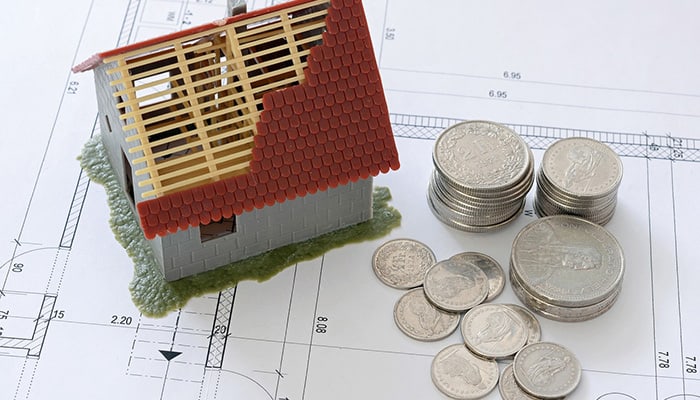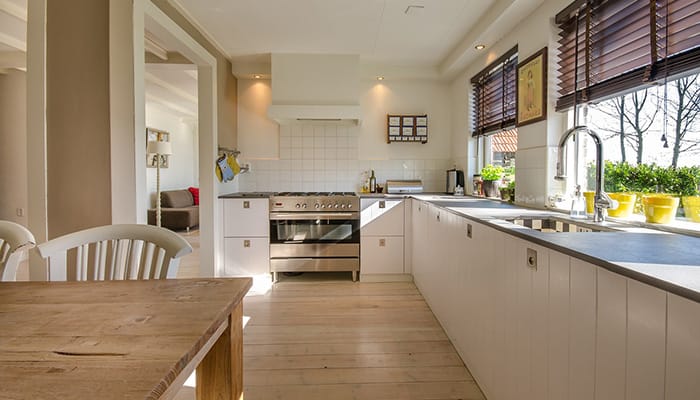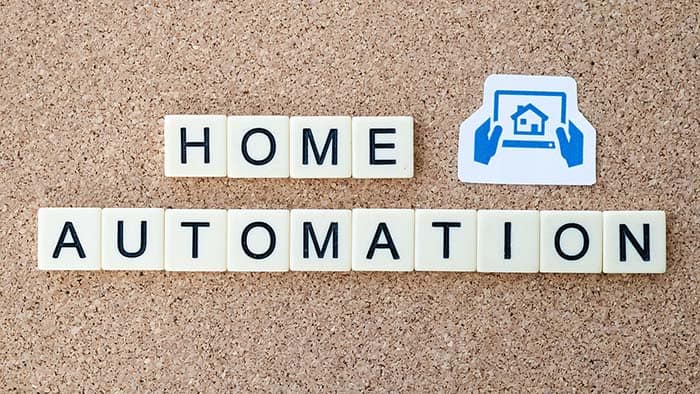Mastering Budget Smart Homes
Mastering Budget Constraints: How to Establish a Smart Home with Limited Resources

Creating a smart home can be an exciting venture. However, one common obstacle many individuals face is budget constraints. The key to overcoming this challenge is effective planning and budget implementation. It starts with understanding what a smart home is, the resources required, and aligning these to your financial capabilities. Often, due to lack of proper planning, we tend to overspend or underspend, missing out on essential elements or oversaturating our homes with unnecessary gadgets. This article aims to guide you on how to create budget smart homes, ensuring that every dollar spent is worth the value received.
Understanding Budget Smart Homes

Smart home technology refers to a suite of devices, appliances, or systems that connect into a common network and can be independently and remotely controlled. When your home technology works together in one system, it can also be referred to more broadly as a “connected home”. Examples of smart home technology include smart thermostats, smart door locks, smart light bulbs, and home security solutions.
The essence of a smart home is to provide convenience, comfort, energy efficiency, and security. It’s about automating routine tasks and giving you control over your home environment, even when you’re not physically present.
However, diving into smart home technology without a clear understanding can lead to unnecessary expenditure. Therefore, it’s crucial to comprehend the basics, the functionality of different smart devices, and how they align with your needs before setting up your budget.
Setting Priorities

Identifying Essential Smart Home Features
- Security: Explore the fundamental importance of a secure home and how smart security features can be prioritized within budget constraints. From smart locks to surveillance systems, discover cost-effective options that enhance your home’s safety.
- Energy Efficiency: Delve into the world of energy-efficient smart devices. Learn about the long-term savings associated with these technologies and how to make informed choices that align with both your environmental and financial goals.
- Convenience and Automation: Uncover the convenience and efficiency that smart home automation brings. From lighting to entertainment systems, identify key areas where automation can be strategically implemented, optimizing your daily life while respecting your budget.
Conducting a Needs Assessment for Personalized Priorities
In the realm of smart homes, a one-size-fits-all approach simply doesn’t suffice. Conducting a personalized needs assessment becomes the cornerstone of establishing a smart home that resonates with your unique lifestyle and preferences.
- Identifying Lifestyle Patterns: Begin by closely examining your daily routines and lifestyle patterns. Understand how you interact with your living space, the specific challenges you face, and the areas where smart technology could seamlessly integrate to enhance your overall experience.
- Prioritizing Pain Points: Pinpoint the pain points in your daily life that smart home technology could address. Whether it’s streamlining morning routines, improving security, or optimizing energy consumption, understanding these pain points is essential for making targeted and impactful smart home investments.
- Assessing Technological Comfort Level: Consider your comfort level with technology. Are you an early adopter eager to explore cutting-edge solutions, or do you prefer user-friendly, straightforward devices? This assessment will guide you towards devices that not only fit your needs but also align with your comfort level and ease of use.
- Future-Proofing Considerations: Think about your plans for the future. Are you looking for solutions that can adapt and grow with your changing needs? Considering the scalability and compatibility of smart home devices is crucial for a sustainable and future-proofed investment.
Strategies to Establish a Smart Home with Limited Resources

If you’re working with a tight budget, it’s essential to have a strategic approach to build your smart home. Start by defining your needs. What aspects of home automation are most important to you? Which devices align with your lifestyle and needs? The key is to maximize the impact of your investments while staying within financial boundaries.
- Phased Implementation: Recognize that building a smart home is a journey, not a sprint. Consider a phased implementation approach, where you prioritize and introduce smart devices gradually over time. This not only spreads out the financial commitment but also allows you to fine-tune your setup based on real-world needs and experiences.
- Budget-Friendly Bundles: Explore the availability of budget-friendly bundles offered by smart home device manufacturers. These packages often combine essential devices at a discounted rate, providing a cost-effective way to establish a baseline level of automation and connectivity in your home.
- DIY Solutions: Harness the power of Do It Yourself (DIY) solutions. By taking a hands-on approach, you not only save on installation costs but also gain a deeper understanding of your smart home infrastructure. Consider starting with DIY projects that align with your needs and technical skills, gradually expanding as you become more comfortable with the technology.
- Utilize Open-Source Platforms: Explore open-source smart home platforms that offer flexibility and cost-effectiveness. Open-source solutions can be particularly beneficial for those comfortable with customization and eager to experiment with a variety of devices without committing to proprietary ecosystems.
- Research and Compare Value: Continue to prioritize thorough research and comparisons. Evaluate the value each device brings to your smart home, considering not only the upfront cost but also long-term benefits. Look for devices that strike a balance between affordability, reliability, and functionality.
Future-Proofing on a Budget

Selecting Devices with Scalability and Compatibility in Mind
Future-proofing a smart home on a budget requires a careful consideration of the devices chosen. Guide readers through the art of selecting devices with scalability and compatibility, emphasizing the importance of flexibility in adapting to emerging technologies.
- Seamless Integration:
- Stress the significance of devices that seamlessly integrate into existing smart home ecosystems. Devices with open-source compatibility or support for widely adopted communication protocols, such as Zigbee or Z-Wave, ensure that they can adapt and communicate with a variety of other devices, both current and future.
- Modular Systems:
- Advocate for modular systems that allow users to expand and upgrade individual components without overhauling the entire setup. Devices that function as part of a larger, scalable system provide the flexibility needed to accommodate emerging technologies without rendering previous investments obsolete.
- Firmware Updates and Support:
- Highlight the importance of devices with a track record of regular firmware updates. Manufacturers committed to providing ongoing support ensure that devices remain current and compatible with new technologies. This commitment safeguards against premature obsolescence and extends the lifespan of each smart home component.
- Interoperability Standards:
- Encourage readers to prioritize devices adhering to interoperability standards. Products that comply with industry standards, such as those set by organizations like the Open Connectivity Foundation (OCF) or the Connectivity Standards Alliance (CSA), are more likely to work seamlessly with a wide range of devices, current and future.
Planning for Future Upgrades Without Breaking the Bank
Effective future-proofing involves strategic planning for upgrades without exceeding budgetary constraints. Explore practical approaches to planning for future smart home enhancements while ensuring financial prudence.
- Phased Upgrades:
- Introduce the concept of phased upgrades as a budget-friendly approach. Rather than attempting a comprehensive overhaul at once, encourage readers to prioritize essential upgrades and implement them gradually over time. This method allows for a steady progression towards a more advanced smart home without straining finances.
- Budget-Friendly Bundles:
- Suggest exploring budget-friendly bundles for planned upgrades. Manufacturers often offer discounted packages when multiple devices are purchased together. By strategically bundling upgrades, readers can maximize savings and achieve a more cohesive smart home experience without compromising on financial feasibility.
- DIY Upgrade Projects:
- Empower readers to take a hands-on approach through DIY upgrade projects. Simple enhancements, like adding sensors or integrating new devices, can often be achieved with modest investments. Encourage readers to explore these opportunities, fostering a sense of accomplishment and customization while keeping costs in check.
- Leveraging Trade-In Programs:
- Advise readers to explore trade-in programs offered by manufacturers. Some companies provide incentives for returning older devices when upgrading to newer models. This can significantly offset the cost of new devices, making upgrades more financially viable.
Staying Informed About Emerging Technologies and Budget-Friendly Options
Instill a forward-thinking mindset by encouraging readers to stay informed about the dynamic landscape of smart home technologies. Provide practical tips for keeping abreast of emerging trends while remaining mindful of budget considerations.
- Industry Publications and Blogs:
- Recommend relevant industry publications and blogs as valuable sources of information. Regularly reading authoritative sources helps readers stay informed about the latest technological advancements, industry trends, and upcoming releases.
- Participation in Technology Forums:
- Encourage active participation in technology forums and online communities. Engaging in discussions with other smart home enthusiasts provides valuable insights into emerging technologies and real-world user experiences. These forums often serve as a rich source of information on budget-friendly options and effective smart home strategies.
- Attend Virtual or Local Tech Events:
- Suggest attending virtual or local tech events to gain firsthand exposure to emerging technologies. Many events feature demonstrations of new smart home products and innovations. This direct experience enables readers to make informed decisions about future upgrades based on personal preferences and needs.
- Exploring Open-Source Communities:
- Highlight the importance of exploring open-source communities, where developers and tech enthusiasts collaborate on innovative projects. Open-source platforms often lead the way in adopting new technologies, and readers can benefit from the community’s insights on budget-friendly solutions and emerging trends.
Conclusion

In conclusion, several key strategies emerge as essential guideposts. These strategies, rooted in the principles of strategic planning, prioritization, and informed decision-making, empower enthusiasts to seamlessly integrate cutting-edge technology into their homes while respecting financial constraints.
- Strategic Planning:
- The cornerstone of success in building a smart home within budget constraints is strategic planning. By outlining your goals, understanding your unique needs, and envisioning the future scalability of your smart home, you lay a solid foundation. This proactive approach ensures that every investment aligns with both your immediate requirements and your long-term aspirations.
- Prioritization of Essentials:
- Prioritizing essential smart home features is a crucial strategy in managing budget limitations effectively. By identifying key areas such as security, energy efficiency, and convenience, you gain clarity on where to allocate resources for maximum impact. This targeted approach ensures that your initial investments address fundamental needs while remaining within budgetary boundaries.
- Thorough Research and Comparison:
- The power of knowledge cannot be overstated. Thorough research and comparison of smart home devices, brands, and models form a critical strategy. By understanding the market, exploring user reviews, and comparing value against cost, you equip yourself with the insights needed to make informed decisions. This diligent approach ensures that every investment maximizes functionality without unnecessary financial strain.
- DIY Solutions and Open-Source Alternatives:
- Harnessing the potential of Do It Yourself (DIY) solutions and open-source alternatives emerges as a cost-effective strategy. By exploring hands-on projects and open-source platforms, you not only save on installation costs but also gain a deeper understanding of your smart home infrastructure. This approach encourages experimentation and customization, fostering a personalized and budget-friendly smart home experience.
- Maximizing Energy Efficiency:
- An overarching strategy is to prioritize energy efficiency in smart home investments. By exploring devices that optimize energy consumption and contribute to long-term savings, you align your technological aspirations with environmental consciousness. This strategy not only benefits the planet but also enhances the sustainability of your smart home within budget constraints.
- Future-Proofing Within Means:
- Future-proofing your smart home within budget limitations is a forward-thinking strategy. By selecting devices with scalability and compatibility, planning for phased upgrades, and staying informed about emerging technologies, you ensure that your smart home investments stand the test of time. This strategy guards against obsolescence and encourages a gradual evolution of your connected living space.
As readers embark on their smart home journey, these key strategies serve as a roadmap, guiding them through the intricate landscape of budget constraints. Through strategic planning, thoughtful prioritization, and thorough research, enthusiasts can confidently build a smart home that not only meets their technological aspirations but also aligns harmoniously with their financial realities.
Mastering Budget Smart Homes Read More »













